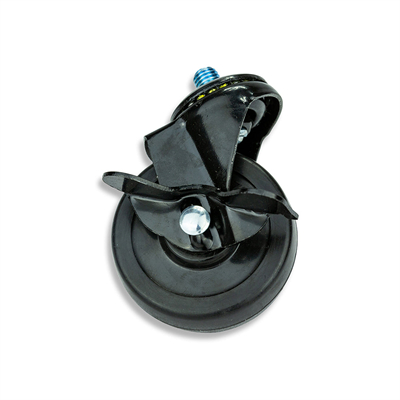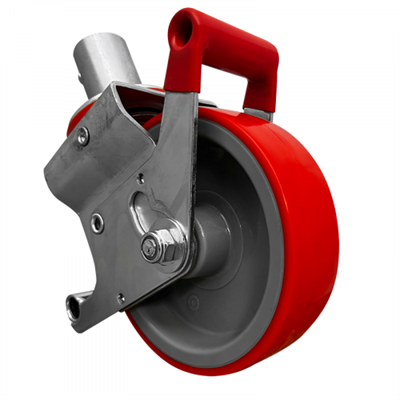Locking casters serve several important functions in various applications and environments. Their primary function is to provide mobility while also offering the ability to securely lock an object or piece of equipment in place. Here are some of the key functions of locking casters:
- Mobility: Locking casters allow for easy movement of objects, making it simple to reposition or transport them within a space. This is particularly useful for furniture, industrial equipment, and medical devices.
- Stability: The primary function of locking casters is to stabilize an object. When the caster is not locked, it can swivel and roll, but when locked, it prevents movement. This is crucial in situations where stability and safety are important, preventing unintended shifting or rolling of objects.
- Precise Positioning: Locking casters enable precise positioning of objects. You can move an object to a specific location and then lock the casters in place to maintain that position, which is particularly useful for tasks that require accuracy and alignment.
- Safety: Locking casters enhance safety by preventing objects from moving when it’s essential that they remain stationary. This is important in situations where objects could pose a hazard if they were to shift or roll, such as in medical settings or on construction sites.
- Load Distribution: Casters help distribute the weight of heavy objects evenly, reducing the physical effort required to move them. Locking casters can secure these objects in place once they are in the desired location.
- Maneuverability: Locking casters, typically swivel casters, provide the flexibility to move objects in any direction, even in tight spaces or around obstacles.
- Floor Protection: Many locking casters are designed with non-marking or soft wheel materials that protect the flooring from scratches, scuffs, or damage during movement.
- Adjustability: Locking casters offer the ability to adjust the height or angle of an object to suit the user’s needs. This is often seen in adjustable chairs, tables, and medical equipment.
- Flexibility: Objects with locking casters can be reconfigured quickly and easily, adapting to changing needs or preferences.
- Locking Options: Locking casters come with different locking options, such as total lock (both wheel rotation and swivel movement are locked) and directional lock (only wheel rotation is locked while swivel movement is allowed). These options provide the flexibility to choose the level of immobilization required.
In summary, locking casters provide the combination of mobility and stability, offering a versatile solution for a wide range of applications. They are essential for enhancing safety, convenience, and efficiency in various environments, from home furniture to industrial equipment and medical devices.


